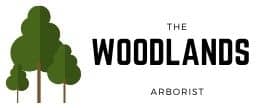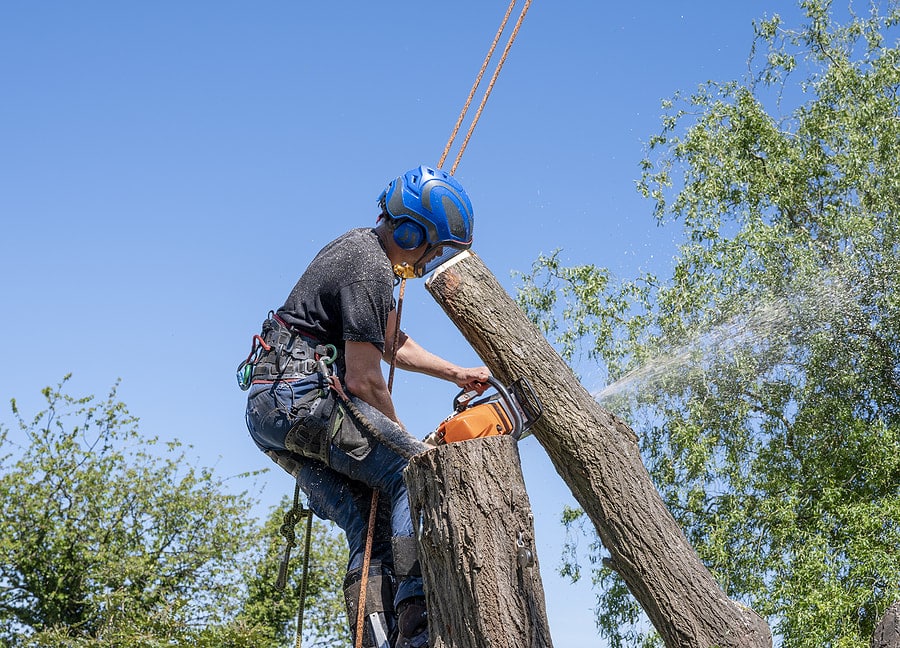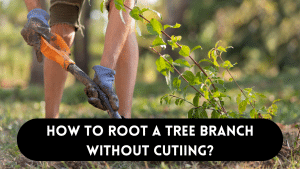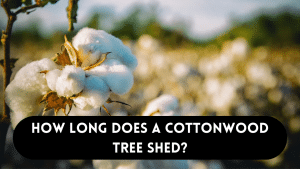The Asian emerald ash borer (Agrilus planipennis) is a harmful invasive insect. EAB has threatened North American ash trees (genus Fraxinus) since its inadvertent introduction. This little, metallic green beetle’s larvae wreak considerable harm despite its size. The emerald ash borer is devastating to ash trees. The larvae of adult beetles deposit their eggs on ash tree bark and dig underground to feast on the tree’s interior tissues. This tunneling impairs the tree’s water and nutrient flow, killing it.
Rapid spread is a major worry with the emerald ash borer infestation. Since its discovery in North America in the early 2000s, the beetle has damaged ash trees in numerous states and provinces. The beetle’s ability to move through contaminated firewood has enhanced its spread. Tree owners must recognize emerald ash borer symptoms early on. Some major indications are infested ash trees have thin canopies and withering leaves due to poor nutrition and water intake.
Understand the emerald ash borer issue before determining whether to keep or destroy an ash tree on your property. In the next parts, we will discuss ash tree health assessments and pest remedies.
Ash Tree Health Assessment
Assessing Tree Health
Before deciding whether to keep or chop down your ash tree, evaluate its health. A comprehensive study will evaluate the tree’s emerald ash borer (EAB) infestation and recovery prospects. Steps to evaluate your ash tree’s health:
Visual Inspection
Start with a visual ash tree assessment. Look for these signs:
Check the tree’s canopy. Dead branches or diminishing foliage? A thin canopy may suggest EAB damage.
Bark irregularities: Look for EAB larvae-left splits, fissures, or D-shaped exit holes. These strongly indicate infestation.
Epicormic Growth: Look for little shoots or branches growing along the trunk or bigger branches. Stress from EAB infestations causes these growths.
Root and Soil Inspection
The roots and soil surrounding your ash tree affect its health:
Assess soil moisture. Ash trees with EAB infections may experience drought stress. Dry, broken soil near the tree’s base may indicate this.
Root Health: Check the tree’s root zone for damage or decay. Nutrient and water absorption need healthy roots.
Expert Arborist Consultation
For a more accurate ash tree health evaluation, visit a trained arborist or tree care specialist. Tree health may be assessed thoroughly by arborists. They can diagnose EAB infestations using bark and root samples and provide suggestions.
Early Warning and Action
Keep in mind that EAB infections need early identification. To save your ash tree, act quickly if you see indications of infection. Delayed therapy might cause irreparable harm.
We will discuss emerald ash borer treatment methods in the following section. Understanding your tree’s health is essential to choose the best way to preserve your ash tree.
Can Ash Trees Be Saved?
You may ask whether you can rescue your ash tree from emerald ash borer (EAB) infestation. Fortunately, depending on the infestation and tree health, there are numerous options.
Insecticides
Insecticidal treatments are widespread and effective for EAB infections. These treatments target adult insects and larvae to preserve the ash tree. You should know:
Systemic Insecticides: The tree’s vascular system absorbs systemic insecticides, rendering it hazardous to EAB. This therapy is usually a soil drench or trunk injection.
Insecticide timing is crucial. If EAB is prevalent in your region, early treatment or prevention are most successful.
Professional Application: Certified arborists and pesticide applicators prefer insecticidal treatments. Their knowledge ensures optimum dosing and administration.
Biocontrols
Biological controls use emerald ash borer predators or parasites to suppress the infestation. While research is continuing, several potential biological control approaches include:
Parasitoid Wasps: Some species prey on EAB larvae. In certain areas, researchers release these wasps to suppress EAB numbers.
Beneficial fungus and other EAB predators are being explored as biological control agents.
Tree Health Care
Overall tree health is important in addition to specialized treatments. A healthy ash tree can withstand and recover from EAB infestations. Think about this:
Regular pruning: Removing dead or infected branches boosts tree health and reduces stress.
Proper Watering and Fertilization: Watering and fertilizing the tree may keep it strong.
Mulching around the tree base retains moisture and regulates soil temperature.
Arborist Consultation
A licensed arborist or tree care specialist should help you choose the finest ash tree treatment. They’ll evaluate the tree’s health, infestation, and habitat to decide the best treatment.
Continuous Monitoring
Treatment is ongoing. Monitoring and follow-up treatments may be needed to keep your ash tree healthy. EAB activity may be detected and addressed quickly by regular evaluations.
In the following part, we’ll cover hazards and costs of cutting down your ash tree. Making an educated choice regarding ash tree care is crucial for its maintenance and landscape safety.
Before Cutting Down an Ash Tree
There are numerous important factors to consider before cutting down your ash tree due to an emerald ash borer (EAB) infestation. Risks, advantages, and costs must be considered.
Infested Tree Maintenance Risks
You may wish to save your ash tree for its aesthetic, ecological, or emotional value, however afflicted trees pose risks:
Safety Hazard: Infested ash trees weaken and become unstable. Dead branches or the whole tree might fall, causing property damage or injuries.
Invasive Spread: Untreated EAB plants may infest surrounding healthy ash trees, spreading the pest.
Health and Aesthetic Decline: The infected tree’s health will degrade, making it less appealing and manageable.
Treatment vs. Removal Cost
Consider the cost of treating or removing your ash tree:
Treating an ash tree for EAB infection requires an initial treatment and continuing upkeep. While costly, they may be cheaper than removing and replacing the tree.
Removal Costs: Removing a mature tree may be expensive, particularly if it’s dangerous or hard to reach. Stump removal and grinding costs must also be considered.
If you remove your ash tree, you’ll need to spend on planting and establishing a new one.
Local Rules and Permits
Contact your local municipality or arborist about tree removal or treatment requirements and permits before taking action. Some localities prohibit tree removal, particularly if they are a certain size or type.
Preservation Work
To preserve your ash tree, you need a long-term strategy. Consult a qualified arborist about treatment feasibility, consequences, and care.
Other Planting
Consider planting different trees. Native trees that resist EAB may be best. This can keep your landscape beautiful and ecologically sound.
Preservation and Safety
The choice to chop down or preserve your ash tree should weigh safety and preservation aims. Safety should be a key issue if the tree threatens persons or property.
If you remove your ash tree, we will discuss alternate tree species in the following section. Carefully considering these factors can help you decide what to do with your ash tree.
Trees other than ash
If you have to cut down an ash tree because of an emerald ash borer (EAB) infestation, it’s important to think about what you could grow instead. If you want to keep the look and biological function of your scenery, you can replace your ash tree with a different type. Here are some other kinds of trees to think about:
Trees from your area
Most native trees do well in their local climate and are less likely to get pests or diseases. Think about natural trees that grow well in your area when picking a replacement tree. Some popular choices for natural trees are:
Oak Trees (Quercus spp): Oak trees are known for being strong, living for a long time, and being important to the environment. They are home to many kinds of animals, like birds and bugs.
Maple Trees (Acer spp): Maple trees are popular because their fall leaves are colorful and they can grow in many types of soil.
Hickory Trees (Carya spp): Hickory trees have nuts that you can eat and they give off a lot of shade.
Dogwood Trees (Cornus spp): Dogwoods are valued for their aesthetic value and beautiful spring flowers.
Defense against Pests
When choosing a different kind of tree, look for one that has a history of not getting pests or diseases that are popular in your area. Talk to trees or plant workers in your area to find out what they suggest for your area.
Differences and Differences
Having different kinds of trees in your yard is good for the environment. When you plant many different kinds of trees, it makes it less likely that a pest or disease will wipe out a lot of trees. It also helps make the environment more complex.
Think About Ecosystems in Your Area
When picking a different kind of tree, think about the area environment and what wildlife needs. Some trees give birds and insects food, protection, and places to live. Your choice can add to the variety of life in your area as a whole.
Size of Trees and Rate of Growth
Think about how big the tree type you choose will get and how fast it will grow. Some trees grow faster than others, which means they may be grown up sooner. This can change how the tree looks and how much shade it gives.
Things to think about for each site
Look at the planting site’s factors, such as the type of earth, how much sunlight it gets, and how much space there is. Choose a type of tree that can grow well in the area. Soil testing can give you important information that can help you choose the right tree.
Maintenance and Care
Once you’ve decided on a different kind of tree, make sure it gets the care and maintenance it needs. For strong root systems and healthy growth, newly planted trees may need to be watered, pruned, and fertilized on a regular basis.
Adding different tree types to your landscape can make it look better and be better for the environment, while also making it less likely that pests will come back. Talk to arborists or horticulturists in your area to get expert help on how to choose and care for the best replacement plants for your case.
Making the Choice
Choosing whether or not to save an ash tree with emerald ash borer (EAB) or cut it down is a big decision that can be hard to make. This part will walk you through the things to think about and steps to take so you can make an informed choice about what to do with your ash tree.
Figure out how bad the infestation is.
First, figure out how bad the EAB problem is in your ash tree. Talk to a qualified botanist to get a full assessment. They will look at how healthy the tree is, how bad the problem is, and what risks it might cause.
First, Safety
Put safety first. If the infected tree could fall on property, buildings, or people, it might need to be taken down right away. The most important thing should always be safety.
Choices for Treatment
Talk to your landscaper about therapy choices. If the infection is caught early and the tree is otherwise healthy, treatment may be a choice. Know what treatment will cost, what it will do for you, and how long it will take.
Think about the Costs
Think about how the choice will affect your finances. Compare the cost of treating the tree, continuing to take care of it, and possibly taking it down to the cost of replacing it with a good option. Think about any long-term saves you could make or land value you could add.
Rules in the area
Check the local rules and permits needed to cut down or fix a tree. To escape legal problems, it’s important to follow the area rules.
Efforts to protect
If you want to keep your ash tree alive, work with your expert to make a detailed plan for doing so. This plan should include treatment routines, ways to keep track of progress, and measures for continued care.
Goals for the Future Landscape
Think about your long-term plans for your surroundings. How does the ash tree fit into the plan of your whole yard? Think about the look, the shade, and the environmental benefits you want to keep or improve.
Other Ways to Choose a Tree
If you decide to cut down the ash tree, choose a new tree type that fits your scenery and the conditions where it will grow. Think about how your choices affect the environment and how different they are.
Attachment of the Heart
Recognize any feelings you might have about the ash tree. Even though nostalgia is important, you should also think about safety and the health of your area as a whole.
Consulting and getting advice from experts
Talk to qualified arborists, tree care pros, and area experts during the decision-making process. Their knowledge and experience can be very helpful.
Acting on Time
Once you’ve thought about everything and gathered all the information you need, it’s time to make a choice. Delaying action can cause damage that can’t be fixed and make safety risks worse.
Write down your choice
Write down your choice and why you made it, as well as any discussions or expert views that were helpful. This paperwork can be helpful if there are any disagreements or if you need to look at the choice again in the future.
In conclusion, if your ash tree has EAB, you should think carefully about safety, money, the environment, and how you feel before deciding whether to save it or cut it down. Talking to experts and carefully weighing your options will help you make the best decision for your case.
FAQs
How can I tell if emerald ash borers (EAB) are eating my ash tree?
Look for signs like thinning leaves, holes in the wood in the shape of a D, and growth on the trunk. But if you want a skilled opinion, it’s best to talk to a trained arborist.
Can an ash tree that has been infected with EAB still be saved?
Yes, an ash tree can be saved if it is found early and given the right care. Talk to a landscaper about how to treat the tree and how healthy it is.
What could go wrong if I keep an infected ash tree on my property?
As the structure of an infested ash tree shrinks, it can become a safety risk. It could also spread EAB to close trees and cause their health to keep getting worse.
If I decide to cut down my ash tree, are there other trees I can put in its place?
Depending on the temperature and location where you live, there are many other tree types to think about. Most of the time, it’s best to choose native plants or plants that are resistant to common pests.
How do I choose the right professional to look at, treat, or take down a tree?
Look for qualified landscapers or approved tree care workers who have dealt with EAB outbreaks in ash trees before. Before making a choice, you should ask for recommendations and check their records.
Conclusion
Choosing whether or not to save your emerald ash borer (EAB)-infested ash tree or cut it down is a big step in protecting your property and making sure everyone is safe. In this last part, we’ll go over the most important points and give you some final thoughts to help you deal with this tough situation. Figure out how bad the EAB infection is and how it affects the health of your ash tree.
Safety should always come first. If the tree is dangerous, getting rid of it should be your top concern. Talk to qualified landscapers about the different ways to treat the tree and learn about the costs and time commitments involved. Think about how much the tree is worth to your land and how much it will cost to treat, maintain, and possibly remove it.
Follow the rules and get the necessary permits for removing and treating trees in your area. If you decide to save the tree, work with experts to make a plan to keep it alive. Think about what you want your landscape to look like in the long run and how the ash tree fits into your plans.




